
EN
Manual
Insulation monitoring device for unearthed
AC, AC/DC and DC power supplies (IT systems)
up to AC 1000 V/DC 1500 V or AC 200 V/DC 3000 V
Software versions
iso1685DP-425: D0484 V2.3x, D0485 V1.2x
isoHV1685D-425: D0588 V2.3x, D0589 V1.1x
isoLR1685DP-325: D0538V2.2x, D0539V1.1x
isoxx1685Dx-x25_D00272_06_M_XXEN/04.2020
ISOMETER®
iso1685DP-425
isoHV1685D-425
isoLR1685DP-325

Bender GmbH & Co. KG
Postfach 1161 • 35301 Grünberg • Germany
Londorfer Straße 65 • 35305 Grünberg • Germany
Tel.: +49 6401 807-0
Fax: +49 6401 807-259
E-Mail: [email protected]
Web: www.bender.de
© Bender GmbH & Co. KG
All rights reserved.
Reproduction only with permission
of the publisher.
Subject to change.
Customer service
Service-Hotline: 0700-BenderHelp (Telephone and Fax)
Carl-Benz-Straße 8 • 35305 Grünberg • Germany
Tel.:+49 6401 807-760
Fax:+49 6401 807-629
E-Mail:[email protected]

Table of contents
3
isoxx1685Dx-x25_D00272_06_M_XXEN/04.2020
1. Important information ................................................................................6
1.1 How to use this manual . . . . . . . . . . . . . . . . . . . . . . . . . . . . . . . . . . . . . . . . . . . . . . . . 6
1.2 Technical support . . . . . . . . . . . . . . . . . . . . . . . . . . . . . . . . . . . . . . . . . . . . . . . . . . . . . 6
1.2.1 End customer support and advice . . . . . . . . . . . . . . . . . . . . . . . . . . . . . . . . . 6
1.2.2 Repair . . . . . . . . . . . . . . . . . . . . . . . . . . . . . . . . . . . . . . . . . . . . . . . . . . . . . . . . . . . . 6
1.2.3 Customer service . . . . . . . . . . . . . . . . . . . . . . . . . . . . . . . . . . . . . . . . . . . . . . . . . 6
1.3 Training courses . . . . . . . . . . . . . . . . . . . . . . . . . . . . . . . . . . . . . . . . . . . . . . . . . . . . . . . 7
1.4 Delivery conditions . . . . . . . . . . . . . . . . . . . . . . . . . . . . . . . . . . . . . . . . . . . . . . . . . . . . 7
1.5 Storage . . . . . . . . . . . . . . . . . . . . . . . . . . . . . . . . . . . . . . . . . . . . . . . . . . . . . . . . . . . . . . . 7
1.6 Warranty and liability . . . . . . . . . . . . . . . . . . . . . . . . . . . . . . . . . . . . . . . . . . . . . . . . . . 7
1.7 Disposal. . . . . . . . . . . . . . . . . . . . . . . . . . . . . . . . . . . . . . . . . . . . . . . . . . . . . . . . . . . . . . . 7
2. Safety instructions .......................................................................................8
2.1 General safety instructions. . . . . . . . . . . . . . . . . . . . . . . . . . . . . . . . . . . . . . . . . . . . . 8
2.2 Work activities on electrical installations. . . . . . . . . . . . . . . . . . . . . . . . . . . . . . . . 8
2.3 Device-specific safety instructions. . . . . . . . . . . . . . . . . . . . . . . . . . . . . . . . . . . . . . 8
2.4 Intended use . . . . . . . . . . . . . . . . . . . . . . . . . . . . . . . . . . . . . . . . . . . . . . . . . . . . . . . . . . 8
3. Function .........................................................................................................9
3.1 Features. . . . . . . . . . . . . . . . . . . . . . . . . . . . . . . . . . . . . . . . . . . . . . . . . . . . . . . . . . . . . . . 9
3.2 Product description . . . . . . . . . . . . . . . . . . . . . . . . . . . . . . . . . . . . . . . . . . . . . . . . . . . 9
3.3 Functional description . . . . . . . . . . . . . . . . . . . . . . . . . . . . . . . . . . . . . . . . . . . . . . . . . 9
3.3.1 Insulation monitoring . . . . . . . . . . . . . . . . . . . . . . . . . . . . . . . . . . . . . . . . . . . . . 9
3.3.2 Insulation fault location . . . . . . . . . . . . . . . . . . . . . . . . . . . . . . . . . . . . . . . . . . 10
3.3.3 Assignment of the alarm relays K1, K2, K3 . . . . . . . . . . . . . . . . . . . . . . . . . 10
3.3.4 Deactivating the device . . . . . . . . . . . . . . . . . . . . . . . . . . . . . . . . . . . . . . . . . . 10
3.3.5 Measured value transmission . . . . . . . . . . . . . . . . . . . . . . . . . . . . . . . . . . . . . 10
3.4 History memory . . . . . . . . . . . . . . . . . . . . . . . . . . . . . . . . . . . . . . . . . . . . . . . . . . . . . .10
3.5 Self test . . . . . . . . . . . . . . . . . . . . . . . . . . . . . . . . . . . . . . . . . . . . . . . . . . . . . . . . . . . . . . 10
3.5.1 Self test after connection to the supply voltage . . . . . . . . . . . . . . . . . . . 10
3.5.2 Automatic self test . . . . . . . . . . . . . . . . . . . . . . . . . . . . . . . . . . . . . . . . . . . . . . . 11
3.5.3 Manual self test . . . . . . . . . . . . . . . . . . . . . . . . . . . . . . . . . . . . . . . . . . . . . . . . . . 11
4. Device overview .........................................................................................12
4.1 Dimensions . . . . . . . . . . . . . . . . . . . . . . . . . . . . . . . . . . . . . . . . . . . . . . . . . . . . . . . . . . 12
4.2 Connections. . . . . . . . . . . . . . . . . . . . . . . . . . . . . . . . . . . . . . . . . . . . . . . . . . . . . . . . . . 13
4.3 Display and operating elements. . . . . . . . . . . . . . . . . . . . . . . . . . . . . . . . . . . . . . .14
4.3.1 Display elements . . . . . . . . . . . . . . . . . . . . . . . . . . . . . . . . . . . . . . . . . . . . . . . . .14
4.3.2 Device buttons . . . . . . . . . . . . . . . . . . . . . . . . . . . . . . . . . . . . . . . . . . . . . . . . . . .14
4.3.3 Operating elements in the service lid . . . . . . . . . . . . . . . . . . . . . . . . . . . . .14
4.4 Operating and navigating. . . . . . . . . . . . . . . . . . . . . . . . . . . . . . . . . . . . . . . . . . . . .15
5. Mounting and connection ....................................................................... 16
5.1 Mounting . . . . . . . . . . . . . . . . . . . . . . . . . . . . . . . . . . . . . . . . . . . . . . . . . . . . . . . . . . . .16
5.2 Connection. . . . . . . . . . . . . . . . . . . . . . . . . . . . . . . . . . . . . . . . . . . . . . . . . . . . . . . . . . .16
5.2.1 Connection requirements . . . . . . . . . . . . . . . . . . . . . . . . . . . . . . . . . . . . . . . .16
5.2.2 Step-by-step connection of the ISOMETER® . . . . . . . . . . . . . . . . . . . . . . .16
5.2.3 Connecting the EDS to the ISOMETER® isoxx1685DP . . . . . . . . . . . . . . .17
5.3 Connection to an AC system (L1; L2) /to a DC system (+; –) . . . . . . . . . . . . .18
5.4 Connection to a 3AC system with an EDS440 insulation fault locator . . .19
5.5 Connection to an AC system with an EDS460 insulation fault locator . . .20
6. Commissioning .......................................................................................... 21
6.1 Commissioning flow chart insulation fault monitoring . . . . . . . . . . . . . . . . .21
6.2 Commissioning flow chart with insulation fault location . . . . . . . . . . . . . . .21
6.3 Initial commissioning . . . . . . . . . . . . . . . . . . . . . . . . . . . . . . . . . . . . . . . . . . . . . . . . .22
6.3.1 Setting the language . . . . . . . . . . . . . . . . . . . . . . . . . . . . . . . . . . . . . . . . . . . . .22
6.3.2 Setting date and time . . . . . . . . . . . . . . . . . . . . . . . . . . . . . . . . . . . . . . . . . . . .22
6.3.3 Setting the profile . . . . . . . . . . . . . . . . . . . . . . . . . . . . . . . . . . . . . . . . . . . . . . . .22
6.3.4 Setting response value Ran1 for alarm 1 . . . . . . . . . . . . . . . . . . . . . . . . . . .22
6.3.5 Setting response value Ran2 for alarm 2 . . . . . . . . . . . . . . . . . . . . . . . . . . .23
6.3.6 Setting the EDS mode (isoxx1685DP only) . . . . . . . . . . . . . . . . . . . . . . . . .23
6.3.7 Setting the EDS current (isoxx1685DP only) . . . . . . . . . . . . . . . . . . . . . . .23
6.3.8 TEST . . . . . . . . . . . . . . . . . . . . . . . . . . . . . . . . . . . . . . . . . . . . . . . . . . . . . . . . . . . . .23
6.4 Recommissioning. . . . . . . . . . . . . . . . . . . . . . . . . . . . . . . . . . . . . . . . . . . . . . . . . . . . .23
6.5 Commissioning EDS (isoxx1685DP only) . . . . . . . . . . . . . . . . . . . . . . . . . . . . . . .24
7. Display .........................................................................................................25
7.1 Standard display. . . . . . . . . . . . . . . . . . . . . . . . . . . . . . . . . . . . . . . . . . . . . . . . . . . . . .25
7.2 Fault display (active) . . . . . . . . . . . . . . . . . . . . . . . . . . . . . . . . . . . . . . . . . . . . . . . . . .25
7.3 Fault display (inactive) . . . . . . . . . . . . . . . . . . . . . . . . . . . . . . . . . . . . . . . . . . . . . . . .26
7.4 Acknowledging a fault message. . . . . . . . . . . . . . . . . . . . . . . . . . . . . . . . . . . . . . .26
7.5 Data-isoGraph . . . . . . . . . . . . . . . . . . . . . . . . . . . . . . . . . . . . . . . . . . . . . . . . . . . . . . . .26
7.6 History memory . . . . . . . . . . . . . . . . . . . . . . . . . . . . . . . . . . . . . . . . . . . . . . . . . . . . . .27
7.7 Insulation fault location . . . . . . . . . . . . . . . . . . . . . . . . . . . . . . . . . . . . . . . . . . . . . . .27

Table of contentsTable of contents
isoxx1685Dx-x25_D00272_06_M_XXEN/04.2020
4
8. Settings ........................................................................................................ 28
8.1 Device menu structure. . . . . . . . . . . . . . . . . . . . . . . . . . . . . . . . . . . . . . . . . . . . . . . . 28
8.1.1 Menu item EDS (isoxx1685DP only) . . . . . . . . . . . . . . . . . . . . . . . . . . . . . . . 28
8.2 Settings in the device menu . . . . . . . . . . . . . . . . . . . . . . . . . . . . . . . . . . . . . . . . . . 29
8.1 (1.0) Alarm settings . . . . . . . . . . . . . . . . . . . . . . . . . . . . . . . . . . . . . . . . . . . . . 29
8.2 (1.1) Insulation alarm . . . . . . . . . . . . . . . . . . . . . . . . . . . . . . . . . . . . . . . . . . 29
8.2 (1.1.1) Alarm 1 . . . . . . . . . . . . . . . . . . . . . . . . . . . . . . . . . . . . . . . . . . . . . . 29
8.2 (1.1.2) Alarm 2 . . . . . . . . . . . . . . . . . . . . . . . . . . . . . . . . . . . . . . . . . . . . . . 29
8.2 (1.1.3) Fault memory . . . . . . . . . . . . . . . . . . . . . . . . . . . . . . . . . . . . . . . . 29
8.2 (1.2) Profile . . . . . . . . . . . . . . . . . . . . . . . . . . . . . . . . . . . . . . . . . . . . . . . . . . . 29
8.2 (1.3) Device . . . . . . . . . . . . . . . . . . . . . . . . . . . . . . . . . . . . . . . . . . . . . . . . . . . 29
8.2 (1.4) Coupling monitoring (not for isoHR1685D-925) . . . . . . . . . . . 29
8.2 (1.5) Inputs . . . . . . . . . . . . . . . . . . . . . . . . . . . . . . . . . . . . . . . . . . . . . . . . . . . 30
8.2 (1.5.1) Digital 1. . . . . . . . . . . . . . . . . . . . . . . . . . . . . . . . . . . . . . . . . . . . . . 30
8.2 (1.5.2) Digital 2. . . . . . . . . . . . . . . . . . . . . . . . . . . . . . . . . . . . . . . . . . . . . . 30
8.2 (1.6) Outputs. . . . . . . . . . . . . . . . . . . . . . . . . . . . . . . . . . . . . . . . . . . . . . . . . . 31
8.2 (1.6.1) Relay 1 . . . . . . . . . . . . . . . . . . . . . . . . . . . . . . . . . . . . . . . . . . . . . . . 31
8.2 (1.6.2) Relay 2 . . . . . . . . . . . . . . . . . . . . . . . . . . . . . . . . . . . . . . . . . . . . . . . 31
8.2 (1.6.3) Relay 3: . . . . . . . . . . . . . . . . . . . . . . . . . . . . . . . . . . . . . . . . . . . . . . 31
8.2 (1.6.4) Buzzer . . . . . . . . . . . . . . . . . . . . . . . . . . . . . . . . . . . . . . . . . . . . . . . 31
8.2 (2.0) EDS (insulation fault location only for isoxx1685DP) . . . . . . . . 32
8.2 (2.1) General . . . . . . . . . . . . . . . . . . . . . . . . . . . . . . . . . . . . . . . . . . . . . . . . . . 32
8.2 (2.1.1) Mode . . . . . . . . . . . . . . . . . . . . . . . . . . . . . . . . . . . . . . . . . . . . . . . . 32
8.2 (2.1.2) Current . . . . . . . . . . . . . . . . . . . . . . . . . . . . . . . . . . . . . . . . . . . . . . 32
8.2 (2.2) Scanning channels . . . . . . . . . . . . . . . . . . . . . . . . . . . . . . . . . . . . . . . 32
8.2 (2.3) Activating channels . . . . . . . . . . . . . . . . . . . . . . . . . . . . . . . . . . . . . . 33
8.2 (2.4) Group settings. . . . . . . . . . . . . . . . . . . . . . . . . . . . . . . . . . . . . . . . . . . 33
8.2 (2.4.1) Channel. . . . . . . . . . . . . . . . . . . . . . . . . . . . . . . . . . . . . . . . . . . . . . 33
8.2 (2.4.2) Outputs . . . . . . . . . . . . . . . . . . . . . . . . . . . . . . . . . . . . . . . . . . . . . . 34
8.2 (2.4.3) Dig. input . . . . . . . . . . . . . . . . . . . . . . . . . . . . . . . . . . . . . . . . . . . . 35
8.2 (2.4.4) Device settings . . . . . . . . . . . . . . . . . . . . . . . . . . . . . . . . . . . . . . . 35
8.2 (2.5) Channel . . . . . . . . . . . . . . . . . . . . . . . . . . . . . . . . . . . . . . . . . . . . . . . . . 36
8.2 (2.5.1) Name . . . . . . . . . . . . . . . . . . . . . . . . . . . . . . . . . . . . . . . . . . . . . . . . 36
8.2 (2.5.2) CT monitoring. . . . . . . . . . . . . . . . . . . . . . . . . . . . . . . . . . . . . . . . 36
8.2 (2.5.3) Response value IΔL . . . . . . . . . . . . . . . . . . . . . . . . . . . . . . . . . . . 36
8.2 (2.5.4) Response value IΔn . . . . . . . . . . . . . . . . . . . . . . . . . . . . . . . . . . . 36
8.2 (2.6) Outputs . . . . . . . . . . . . . . . . . . . . . . . . . . . . . . . . . . . . . . . . . . . . . . . . . . 36
8.2 (2.6.1) Relays . . . . . . . . . . . . . . . . . . . . . . . . . . . . . . . . . . . . . . . . . . . . . . . . 36
8.2 (2.6.2) Buzzer. . . . . . . . . . . . . . . . . . . . . . . . . . . . . . . . . . . . . . . . . . . . . . . . 36
8.2 (2.6.3) Digital output . . . . . . . . . . . . . . . . . . . . . . . . . . . . . . . . . . . . . . . . 37
8.2 (2.7) Inputs . . . . . . . . . . . . . . . . . . . . . . . . . . . . . . . . . . . . . . . . . . . . . . . . . . . . 37
8.2 (2.7.1) Mode. . . . . . . . . . . . . . . . . . . . . . . . . . . . . . . . . . . . . . . . . . . . . . . . . 37
8.2 (2.7.2) t(on). . . . . . . . . . . . . . . . . . . . . . . . . . . . . . . . . . . . . . . . . . . . . . . . . . 37
8.2 (2.7.3) t(off). . . . . . . . . . . . . . . . . . . . . . . . . . . . . . . . . . . . . . . . . . . . . . . . . . 37
8.2 (2.7.4) Function. . . . . . . . . . . . . . . . . . . . . . . . . . . . . . . . . . . . . . . . . . . . . . 37
8.2 (2.8) Device . . . . . . . . . . . . . . . . . . . . . . . . . . . . . . . . . . . . . . . . . . . . . . . . . . . 37
8.2 (2.8.1) Name. . . . . . . . . . . . . . . . . . . . . . . . . . . . . . . . . . . . . . . . . . . . . . . . . 37
8.2 (2.8.2) Trigger . . . . . . . . . . . . . . . . . . . . . . . . . . . . . . . . . . . . . . . . . . . . . . . 37
8.2 (2.8.3) Fault memory. . . . . . . . . . . . . . . . . . . . . . . . . . . . . . . . . . . . . . . . . 37
8.2 (2.9) Service . . . . . . . . . . . . . . . . . . . . . . . . . . . . . . . . . . . . . . . . . . . . . . . . . . . 37
8.2 (3.0) Data measured values . . . . . . . . . . . . . . . . . . . . . . . . . . . . . . . . . . . . .37
8.2 (4.0) Control . . . . . . . . . . . . . . . . . . . . . . . . . . . . . . . . . . . . . . . . . . . . . . . . . . .38
8.2 (5.0) History . . . . . . . . . . . . . . . . . . . . . . . . . . . . . . . . . . . . . . . . . . . . . . . . . . . .38
8.2 (6.0) Device settings . . . . . . . . . . . . . . . . . . . . . . . . . . . . . . . . . . . . . . . . . . . .38
8.2 (6.1) Language . . . . . . . . . . . . . . . . . . . . . . . . . . . . . . . . . . . . . . . . . . . . . . . . 38
8.2 (6.2) Clock. . . . . . . . . . . . . . . . . . . . . . . . . . . . . . . . . . . . . . . . . . . . . . . . . . . . . 38
8.2 (6.2.1) Time . . . . . . . . . . . . . . . . . . . . . . . . . . . . . . . . . . . . . . . . . . . . . . . . . 38
8.2 (6.2.2) Format (time) . . . . . . . . . . . . . . . . . . . . . . . . . . . . . . . . . . . . . . . . . 38
8.2 (6.2.3) Summer time . . . . . . . . . . . . . . . . . . . . . . . . . . . . . . . . . . . . . . . . . 38
8.2 (6.2.4) Date. . . . . . . . . . . . . . . . . . . . . . . . . . . . . . . . . . . . . . . . . . . . . . . . . . 38
8.2 (6.2.5) Format (date) . . . . . . . . . . . . . . . . . . . . . . . . . . . . . . . . . . . . . . . . . 38
8.2 (6.3) Interface . . . . . . . . . . . . . . . . . . . . . . . . . . . . . . . . . . . . . . . . . . . . . . . . . 39
8.2 (6.3.1) Mode. . . . . . . . . . . . . . . . . . . . . . . . . . . . . . . . . . . . . . . . . . . . . . . . . 39
8.2 (6.3.2) BMS . . . . . . . . . . . . . . . . . . . . . . . . . . . . . . . . . . . . . . . . . . . . . . . . . . 39
8.2 (6.3.3) Modbus RTU. . . . . . . . . . . . . . . . . . . . . . . . . . . . . . . . . . . . . . . . . . 39
8.2 (6.4) Display . . . . . . . . . . . . . . . . . . . . . . . . . . . . . . . . . . . . . . . . . . . . . . . . . . . 39
8.2 (6.4.1) Brightness . . . . . . . . . . . . . . . . . . . . . . . . . . . . . . . . . . . . . . . . . . . . 39
8.2 (6.5) Password. . . . . . . . . . . . . . . . . . . . . . . . . . . . . . . . . . . . . . . . . . . . . . . . . 39
8.2 (6.5.1) Password . . . . . . . . . . . . . . . . . . . . . . . . . . . . . . . . . . . . . . . . . . . . . 39
8.2 (6.5.2) Status . . . . . . . . . . . . . . . . . . . . . . . . . . . . . . . . . . . . . . . . . . . . . . . . 39
8.2 (6.6) Commissioning. . . . . . . . . . . . . . . . . . . . . . . . . . . . . . . . . . . . . . . . . . . 39
8.2 (6.7) Factory settings . . . . . . . . . . . . . . . . . . . . . . . . . . . . . . . . . . . . . . . . . . 39
8.2 (6.8) Service . . . . . . . . . . . . . . . . . . . . . . . . . . . . . . . . . . . . . . . . . . . . . . . . . . . 39
8.2 (7.0) Info . . . . . . . . . . . . . . . . . . . . . . . . . . . . . . . . . . . . . . . . . . . . . . . . . . . . . . .39

Table of contentsTable of contents
isoxx1685Dx-x25_D00272_06_M_XXEN/04.2020
5
9. Device communication .............................................................................40
9.1 RS-485 interface with BMS protocol . . . . . . . . . . . . . . . . . . . . . . . . . . . . . . . . . . . 40
9.1.1 Topology RS-485 network . . . . . . . . . . . . . . . . . . . . . . . . . . . . . . . . . . . . . . . . 40
9.1.2 BMS protocol . . . . . . . . . . . . . . . . . . . . . . . . . . . . . . . . . . . . . . . . . . . . . . . . . . . . 41
9.1.3 BMS master . . . . . . . . . . . . . . . . . . . . . . . . . . . . . . . . . . . . . . . . . . . . . . . . . . . . . . 41
9.1.4 Commissioning of an RS-485 network with BMS protocol . . . . . . . . . . 41
9.1.5 Address setting and termination . . . . . . . . . . . . . . . . . . . . . . . . . . . . . . . . . . 41
9.1.6 Setting the BMS address . . . . . . . . . . . . . . . . . . . . . . . . . . . . . . . . . . . . . . . . . 41
9.1.7 Alarm and operating messages via the BMS bus . . . . . . . . . . . . . . . . . . . 42
9.2 RS-485 interface with Modbus protocol . . . . . . . . . . . . . . . . . . . . . . . . . . . . . . . 43
10. Insulation fault location (isoxx1685DP only) .....................................44
10.1 General description . . . . . . . . . . . . . . . . . . . . . . . . . . . . . . . . . . . . . . . . . . . . . . . . . 44
10.2 Required settings for insulation fault location . . . . . . . . . . . . . . . . . . . . . . . . 44
10.3 Indication on the display . . . . . . . . . . . . . . . . . . . . . . . . . . . . . . . . . . . . . . . . . . . . 44
10.4 Starting and stopping the insulation fault location . . . . . . . . . . . . . . . . . . . 44
11. Alarm messages .......................................................................................45
12. Technical data ...........................................................................................46
12.1 Device profiles . . . . . . . . . . . . . . . . . . . . . . . . . . . . . . . . . . . . . . . . . . . . . . . . . . . . . . 46
12.2 Diagrams . . . . . . . . . . . . . . . . . . . . . . . . . . . . . . . . . . . . . . . . . . . . . . . . . . . . . . . . . . . 47
12.2.1 Response time Power circuits profile . . . . . . . . . . . . . . . . . . . . . . . . . . . . 47
12.2.2 Response time High capacitance profile . . . . . . . . . . . . . . . . . . . . . . . . . 47
12.2.3 Response time Inverter > 10 Hz profile . . . . . . . . . . . . . . . . . . . . . . . . . . . 47
12.2.4 Response time Inverter < 10 Hz profile . . . . . . . . . . . . . . . . . . . . . . . . . . . 47
12.2.5 Response time Fast 2000 μF profile . . . . . . . . . . . . . . . . . . . . . . . . . . . . . 48
12.2.6 Leakage capacitance . . . . . . . . . . . . . . . . . . . . . . . . . . . . . . . . . . . . . . . . . . . . 48
12.3 Factory settings . . . . . . . . . . . . . . . . . . . . . . . . . . . . . . . . . . . . . . . . . . . . . . . . . . . . .49
12.4 Tabular data isoxx1685Dx-x25 . . . . . . . . . . . . . . . . . . . . . . . . . . . . . . . . . . . . . . . 49
12.5 Standards and certifications . . . . . . . . . . . . . . . . . . . . . . . . . . . . . . . . . . . . . . . . . 51
12.6 Ordering details . . . . . . . . . . . . . . . . . . . . . . . . . . . . . . . . . . . . . . . . . . . . . . . . . . . . .51
Index ........................................................................................................ 52

isoxx1685Dx-x25_D00272_06_M_XXEN/04.2020
6
Important information
1. Important information
1.1 How to use this manual
To make it easier for you to understand and revisit certain sections in this manual, we
have used symbols to identify important instructions and information. The meaning of
these symbols is explained below.
This manual is intended for qualified personnel working in electrical
engineering and electronics!
Read the manual before you begin to mount, connect, and commission
the unit. Always keep the manual within easy reach for future reference
following commissioning.
DANGER
This signal word indicates that there is a high risk of danger that will re-
sult in electrocution or serious injury if not avoided.
WARNING
This signal word indicates a medium risk of danger that can lead to
death or serious injury if not avoided.
CAUTION
This signal word indicates a low-level risk that can result in minor or
moderate injury or damage to property if not avoided.
This symbol denotes information intended to assist the user in making
optimum use of the product.
1.2 Technical support
1.2.1 End customer support and advice
Technical support by phone or e-mail for all Bender products
• Questions concerning specific customer applications
• Commissioning
• Troubleshooting
Telephone: +49 6401 807-760 (365 Tage von 07:00 - 20:00 Uhr [MEZ/UTC +1])
Fax: +49 6401 807-259
0700BenderHelp (Tel. and Fax in Germany only)
E-mail: [email protected]
1.2.2 Repair
Repair, calibration, update and replacement service for Bender products
• Repairing, calibrating, testing and analysing Bender products
• Hardware and software update for Bender devices
• Delivery of replacement devices
• Extended guarantee, in-house repair service, replacement devices at no extra cost
Telephone: +49 6401 807-780* (technical issues)
+49 6401 807-784*, -785* (sales)
Fax: +49 6401 807-789
E-mail: [email protected]
Please send the devices for repair to the following address:
Bender GmbH, Repair-Service,
Londorfer Straße 65,
35305 Grünberg
1.2.3 Customer service
On-site service for all Bender products
• Commissioning, parameter setting, maintenance, troubleshooting
• Analysis of the electrical installation in the building (power quality test, EMC test,
thermography)
• Training courses for customers
Telephone: +49 6401 807-752*, -762* (technical issues)/
+49 6401 807-753* (sales)
Fax: +49 6401 807-759
E-mail: [email protected]
Internet: www.bender.de
* Mo-Thu 07:00 a.m. - 16:00 p.m. , Fr 07:00 a.m. - 13:00 p.m.

Important informationImportant information
isoxx1685Dx-x25_D00272_06_M_XXEN/04.2020
7
1.3 Training courses
Bender is happy to provide training regarding the use of test equipment.
The dates of training courses and workshops can be found on the Internet at
www.bender-de.com -> Know-how -> Seminars.
1.4 Delivery conditions
Bender sale and delivery conditions apply.
For software products, the "Softwareklausel zur Überlassung von Standard-Software als
Teil von Lieferungen, Ergänzung und Änderung der Allgemeinen Lieferbedingungen für
Erzeugnisse und Leistungen der Elektroindustrie" (software clause in respect of the li-
censing of standard software as part of deliveries, modifications and changes to general
delivery conditions for products and services in the electrical industry) set out by the ZVEI
(Zentralverband Elektrotechnik- und Elektronikindustrie e.V.) (German Electrical and
Electronic Manufacturers' Association) also applies. Amending the “General Conditions
for the supply of Products and Services of the Electrical and Electronics Industry” (GL)*
Sale and delivery conditions can be obtained from Bender in printed or electronic format.
1.5 Storage
The devices must only be stored in areas where they are protected from dust, damp, and
spray and dripping water, and in which the specified storage temperatures can be
ensured.
1.6 Warranty and liability
Warranty and liability claims in the event of injury to persons or damage to property are
excluded if they can be attributed to one or more of the following causes:
• Improper use of the device.
• Incorrect mounting, commissioning, operation and maintenance of the device.
• Failure to observe the instructions in this operating manual regarding transport,
commissioning, operation and maintenance of the device.
• Unauthorised changes to the device made by parties other than the manufacturer.
• Non-observance of technical data.
• Repairs carried out incorrectly and the use of replacement parts or accessories not
approved by the manufacturer.
• Catastrophes caused by external influences and force majeure.
• Mounting and installation with device combinations not recommended by the man-
ufacturer.
This operating manual, especially the safety instructions, must be observed by all person-
nel working on the device. Furthermore, the rules and regulations that apply for accident
prevention at the place of use must be observed.
1.7 Disposal
Abide by the national regulations and laws governing the disposal of this device. Ask
your supplier if you are not sure how to dispose of the old equipment.
The directive on waste electrical and electronic equipment (WEEE directive) and the di-
rective on the restriction of certain hazardous substances in electrical and electronic
equipment (RoHS directive) apply in the European Community. In Germany, these poli-
cies are implemented through the "Electrical and Electronic Equipment Act" (ElektroG).
According to this, the following applies:
• Electrical and electronic equipment are not part of household waste.
• Batteries and accumulators are not part of household waste and must be disposed
of in accordance with the regulations.
• Old electrical and electronic equipment from users other than private households
which was introduced to the market after 13 August 2005 must be taken back by the
manufacturer and disposed of properly.
For more information on the disposal of Bender devices, refer to our homepage at
www.bender-de.com -> Service & Support.

isoxx1685Dx-x25_D00272_06_M_XXEN/04.2020
8
Safety instructions
2. Safety instructions
2.1 General safety instructions
Part of the device documentation in addition to this manual is the enclosed "Safety in-
structions for Bender products".
2.2 Work activities on electrical installations.
If the device is used outside the Federal Republic of Germany, the applicable local stand-
ards and regulations must be complied with. The European standard EN 50110 can be
used as a guide.
Read the operating manual before starting to mount, connect and com-
mission the device. After successful commissioning, keep the manual
within easy reach for future reference.
Only qualified personnel are permitted to carry out the work necessary to
install, commission and run a device or system.
DANGER
Risk of electrocution due to electric shock!
Touching live parts of the system carries the risk of:
• An electric shock
• Damage to the electrical installation
• Destruction of the device
Before installing and connecting the device, make sure that the in-
stallation has been de-energised. Observe the rules for working on elec-
trical installations.
2.3 Device-specific safety instructions
2.4 Intended use
The device is used for monitoring the insulation resistance in large power supply systems
designed as IT systems. The specific measurement method AMP
PLUS
monitors the insula-
tion resistance also in installations where extremely high system leakage capacitances to
earth exist due to interference suppression methods. Adaptation event to high leakage
capacitances is automatic.
The device generates locating current pulses required for insulation fault location. That
allows the localisation of the insulation fault using permanently installed or mobile insu-
lation fault locators.
Intended use also implies:
• The observation of all information in the operating manual
• Compliance with test intervals
In order to meet the requirements of applicable standards, the equipment must be ad-
justed to local equipment and operating conditions by means of customised parameter
settings. Please heed the limits of the range of application indicated in the technical data.
In the "Fast 2000 µF" profile, the iso1685DP can be used in photovoltaic systems.
Any other use than that described in this manual is regarded as improper.
Installation inside a control cabinet
If the ISOMETER® is installed inside a control cabinet, the insulation fault
message must be audible and/or visible to attract attention.
IT systems with several ISOMETER®s
Make sure that only one active ISOMETER® is connected in each intercon-
nected system. If IT systems are interconnected via coupling switches,
make sure that ISOMETER®s not currently used are disconnected from the
IT system and deactivated. For IT systems coupled via diodes or capaci-
tances a central control of the different ISOMETER®s is required.
Prevent measurement errors!
When a monitored IT system contains galvanically coupled DC circuits, an
insulation fault can only be detected correctly if the rectifier valves (e.g.
rectifier diode, thyristors, IGBTs, frequency inverters, …) carry a minimum
current of > 10 mA.
Unspecified frequency range
When connecting to an IT system with frequency components below the
specified frequency range, the response times and response values may
differ from the indicated technical data. However, depending on the ap-
plication and the selected measurement method, continuous insulation
monitoring is also possible in this frequency range.

isoxx1685Dx-x25_D00272_06_M_XXEN/04.2020
9
Function
3. Function
3.1 Features
ISOMETER® for AC IT systems with galvanically connected rectifiers or inverters and for DC
IT systems. (IT = unearthed systems)
• Automatic adjustment to high system leakage capacitances, for measuring ranges
see 11. "Alarm messages" on page 45
• Combination of AMP
PLUS
and other profile-specific measurement method
• Separately adjustable response values R
an1
(alarm 1) and R
an2
(alarm 2) for prewarn-
ing and alarm
• High-resolution graphic LC display for excellent readability and recording of the
device status
• Connection monitoring
• Automatic device self test with automatic alarm message in the event of a fault
• Graphical representation of the insulation resistance over time (isoGraph)
• History memory with real-time clock (buffer for 13 days) for storing 1023 alarm
messages with date and time
• Freely programmable digital inputs/outputs
• Remote setting of certain parameters via the Internet (COMTRAXX® gateway)
• Remote diagnosis by the Bender service via the Internet
• RS-485 interface for data exchange with other Bender devices
iso1685DP-425
• Measurement of insulation faults 200 …1 M
• Integrated locating current injector up to 50 mA for insulation fault location
• Display of insulation faults selectively located by EDS systems
• Parameter setting of EDS systems
• Customer-specific texts for each measuring channel via the menu
isoLR1685DP-425
• Measurement of low-resistance insulation faults 20 …100 k
• Integrated locating current injector up to 50 mA for insulation fault location
• Display of insulation faults selectively located by EDS systems
• Parameter setting of EDS systems
• Customer-specific texts for each measuring channel via the menu
isoHR1685D-925
• Measurement of high-resistance insulation faults 100 k…100 M
• Insulation monitoring for overhead catenary vehicles and elevating work platforms.
Observe application note "isoxx1685Dx-x25_D00272_00_N_XXDE" for this applica-
tion.
3.2 Product description
ISOMETER®s of the isoxx1685Dx-x25 device family are used for insulation monitoring of
large systems designed as IT systems. The device variants described in the manual have
different voltage ranges. The exact device specification can be found in Chapter 12. Tech-
nical data.
The measurement method especially developed for this purpose monitors the insulation
resistance even in installations where extremely high system leakage capacitances
against earth exist due to interference suppression methods. Adaptation even to system-
related high leakage capacitances is automatic.
The ISOMETER®s isoxx1685DP-x25 generate locating current pulses required for insula-
tion fault location. That allows the localisation of the insulation fault using permanently
installed or mobile insulation fault locators.
3.3 Functional description
Insulation monitoring is carried out using an active measuring pulse which is superim-
posed onto the IT system to earth via the integrated coupling. If the insulation resistance
between the IT system and earth falls below the set prewarning response value R
an1
, the
"ALARM 1" LED lights up and relay K1 (11/12/14) switches. If the insulation resistance falls
below the alarm response value R
an2
, alarm relay K2 (21/22/24) switches and the "ALARM
2" LED lights up.
When starting the insulation fault location, the "PGH ON" LED signals the locating current
pulse.
3.3.1 Insulation monitoring
For insulation monitoring, a pulsating AC measuring voltage is superimposed onto the IT
system. The measuring pulse consists of positive and negative rectangular impulses of
the same amplitude. The period duration depends on the system leakage capacitances in
each case and the insulation resistances of the system to be monitored.
Pulse sequence of the measuring voltage for insulation fault monitoring
U
m
t

FunctionFunction
isoxx1685Dx-x25_D00272_06_M_XXEN/04.2020
10
An insulation fault between the IT system and earth closes the measuring circuit. If the in-
sulation resistance between system and earth falls below the set response values R
an1
and R
an2
(response value R
an1
can be set equal or higher than R
an2
), the associated alarm
relays K1 (11, 12, 14) or K2 (21, 22, 24) switch. Detected insulation faults are signalled to
other bus devices via the BMS bus. In addition, the alarm LEDs ALARM 1 or ALARM 2 light
up.
3.3.2 Insulation fault location
For insulation fault location, a suitable locating current is superimposed onto the faulty
IT system with which insulation fault locators of the EDS... series can locate insulation
faults. The ISOMETER® features an internal locating current injector with I
L
DC 50 mA.
Pulse sequence of the internal locating current injector for insulation fault location
If the "Auto EDS function" is enabled, the ISOMETER® starts the insulation fault location
after the value has fallen below the response values R
an1
and R
an2
. When starting the in-
sulation fault location, the "PGH ON" LED signals the locating current pulse.
During the insulation fault location process, the measurement of the insulation resist-
ance is deactivated and the coupling is disconnected from the mains. If during the insu-
lation fault location the locating current falls below the value measurable by the EDS, the
insulation fault location is terminated by the ISOMETER®.
3.3.3 Assignment of the alarm relays K1, K2, K3
K1 switches when the value falls below the alarm response value R
an1
(insulation resist-
ance).
K2 switches when the value falls below the alarm response value R
an2
(insulation resist-
ance).
K3 switches in the event of a device error or a connection fault.
CAUTION
Malfunctions due to excessive locating current on sensitive system
parts! The locating current flowing between the IT system and earth can
cause controller faults in sensitive parts of the system, such as the PLC or
relay. Ensure that the level of the locating current is compatible with the
system to be monitored.
2 s 4 s 2 s
4 s
I
L
t
3.3.4 Deactivating the device
When the device is deactivated, the coupling unit of the device is galvanically isolated
from the system being monitored.
The device does not measure the insulation resistance, the message "Device inactive" ap-
pears on the display. The IT system is NOT being monitored!
The device uncouples itself from the system to be monitored through an internal system
isolating switch.
Activation or deactivation is done via
• a digital input
• the menu item Alarm settings
• the BMS bus and Modbus RTU
The standby mode of the ISOMETER®, for example, enables application in coupled sys-
tems, since in interconnected systems only one insulation monitoring device may be
connected.
3.3.5 Measured value transmission
All recorded measured values, operating messages and alarms are made available via the
BMS bus or Modbus RTU.
3.4 History memory
All warnings, alarms and device errors are stored in the internal history memory with date
and time stamp. The time the event started, the time of acknowledgement and the end
of the event are recorded. The history memory can be called up and reset via the device
menu (see "History" on page 38).
3.5 Self test
3.5.1 Self test after connection to the supply voltage
Once connected to the supply voltage, all internal measurement functions, the compo-
nents of the process control such as data and parameter memory as well as the connec-
tions to earth are checked. The self test is completed after approx. 60 s. Afterwards, the
normal measurement mode begins.
If a device error or a connection fault is detected, the corresponding alarm will be indicat-
ed in the display as well as via the alarm relay K3 (31-32-34). This relay operates continu-
ously in NC operation, i.e. a device error is signalled even in case of a complete device
failure.

FunctionFunction
isoxx1685Dx-x25_D00272_06_M_XXEN/04.2020
11
During this self test, when the device is being started, the alarm relays are not switched.
3.5.2 Automatic self test
All supply voltages are continuously monitored. The following tests are continuously car-
ried out in the background:
• E-KE connection
• Temperature monitoring of coupling and locating current injector
A self test is automatically run at 24-hour intervals.
During the automatic self test, the alarm relays K1 (11-12-14) and K2 (21-22-24) are not
switched. K3 will not be switched either.
3.5.3 Manual self test
The self test is started via the TEST button of the ISOMETER®.
The following tests are only carried out in the manual self test mode:
• Internal flash
• CPU register
• Watchdogs
• Oscillator
• Restart of the device including re-initialisation and recalibration
• Connection monitoring system
During the manual self test, all alarm relays are switched.
√
33 %
Test successful
Test not successful
Test not available
(e.g. incorrect device settings).
Test in progress
Measurement
Coupling
Earth connec-
tion
TEST

Device overview
isoxx1685Dx-x25_D00272_06_M_XXEN/04.2020
13
4.2 Connections
I2+ I2- I1+ I1-
I2+ I2- I1+ I1-
CAN 1
CAN 2
RS-485
Te rm.
off on
A B S
A B S
k l kT IT
k I kT IT
31 32 34
K3
31 32 34
21 22 24
K2
21 22 24
11 12 14
K1
11 12 14
E KE
E KE
A1 A2
A1 A2
I2+
I2-
I1+
I1-
Digital inputs
off
on
RS-485
termination
CAN 1
CAN 2
no function
A, B, S
RS-485 bus
connection (A,B)
Protocol: BMS
S= PE potential
Connect one end of
shield
k
I
kT
IT
no function
31, 32, 34
Relay output for
internal device
errors
(SERVICE LED)
21, 22, 24
Relay output for alarm
2 insulation faults
11, 12, 14
Relay output for
alarm 1 insulation
faults
E, KE
Separate connection of E (earth) and
KE (reference) to PE.
Connect both to PE
A1, A2
Supply voltage U
s
DC 24 V
Arbitrary polarity
Connection via fuses, 2 A each
L2/L-
L2/-
L1/L+
L1/+
Coupling terminal L2/-.
Connection to L2/- of the IT system
via 1 A fuse
Coupling terminal L1/+.
Connection to L1/+ of the IT system
via 1 A fuse

Device overviewDevice overview
isoxx1685Dx-x25_D00272_06_M_XXEN/04.2020
14
4.3 Display and operating elements
4.3.1 Display elements
1
ON
(green)
The operation indicator lights up continuously.
2
The device display shows information regarding the device and the
measurements.
For further information, refer to the chapter 7. "Display”.
3
PGH ON
(yellow)
The "PGH ON" LED flashes during insulation fault location. It indicates
that the locating current for the insulation fault location is being gener-
ated. The "PGH ON" LED is only active for isoxx1685DP.
4
SERVICE
(yellow)
When a device error is detected, the "SERVICE" LED lights up.
If the LED stays lit, please check the error code list on page 42
.
5
ALARM 1
(yellow)
Insulation fault 1 (prewarning):
The "ALARM 1" LED lights continuously if the insulation resistance falls
below the response value 1, R
F
< R
an1
Flashes: connection fault, check earth and system (L1/+, L2/-)
6
ALARM 2
(yellow)
Insulation fault 2 (alarm):
The "ALARM 2" LED lights continuously if the insulation resistance falls
below the response value 2, R
F
< R
an2
Flashes: connection fault, check earth and system (L1/+, L2/-)
PGH ON
1
2
3
4
5
6
7
8
9
10
11
12
4.3.2 Device buttons
Adjust the device settings in the respective menu using the device buttons. Depending
on the menu entry, one of the options displayed below is assigned to the buttons.
4.3.3 Operating elements in the service lid
7
MENU Opens the device menu.
ESC
Cancels the current process or
navigates one step back in the device menu.
8
EDS Opens the EDS menu (isoxx1685DP only)
Navigates up in a list or increases a value.
9
TEST Starts the device self test.
Navigates forwards (e.g. to the next setting step) or
selects a parameter.
10
RESET Resets alarms.
Navigates backwards (e.g. to the previous setting step) or
selects a parameter.
11
INFO Shows information.
OK Confirms an action or a selection.
12
DATA Indicates data and values.
Navigates down in a list or reduces a value.
Operating elements Function
DIP switch (SS8103) no function
Button (ST6101) Alarm reset
Memory card (SD card) no function

Device overviewDevice overview
isoxx1685Dx-x25_D00272_06_M_XXEN/04.2020
15
4.4 Operating and navigating
Navigate through the device menu using the device buttons. The functions of the device
buttons are described in the chapter "Device buttons" on page 14.
Navigation in lists
To make a selection in a list, navigate
using the and buttons to the re-
spective menu item. Then click "OK".
Navigation with arrows
Increase or decrease a value using the
and buttons. Move to the left or
the right to set different values using
the and buttons. The value posi-
tioned between the symbols is the
value that is set.
Language
x.x.x
• Deutsch
o English
o ...
Date
x.x.x
28.07.2016
Min.1
Max.12

isoxx1685Dx-x25_D00272_06_M_XXEN/04.2020
16
Mounting and connection
5. Mounting and connection
5.1 Mounting
Mount the device using four M5 screws, refer also to the dimension diagram where the
drilling holes are illustrated (see "Dimensions" on page 12). Mount the device so that the
display can be read during operation and the mains connection is (L1/+, L2/–) positioned
at the top.
5.2 Connection
5.2.1 Connection requirements
CAUTION
Risk of property damage due to unprofessional installation!
If more than one insulation monitoring device is connected to a conduc-
tively connected system, the system may be damaged. If several devices
are connected, the device does not work and does not signal insulation
faults. Make sure that only one insulation monitoring device is connected.
Heat on the enclosure surface!
The surface temperature of 60 °C can be exceeded under certain operating
conditions.
Keep the cooling slots uncovered by keeping a distance of at least 15 cm
above and at least 10 cm below the device to adjacent objects in order to
ensure constant air circulation.
Risk of injury from sharp-edged terminals!
Risk of lacerations. Touch the enclosure and the terminals with due care.
Only qualified personnel are permitted to carry out the work necessary
to install, commission and run a device or system.
DANGER
Risk of electrocution due to electric shock!
Touching live parts of the system carries the risk of:
• An electric shock
• Damage to the electrical installation
• Destruction of the device
Before installing and connecting the device, make sure that the in-
stallation has been de-energised. Observe the rules for working on elec-
trical installations.
5.2.2 Step-by-step connection of the ISOMETER®
Connect the device according to the wiring diagram.
Proceed as follows:
1. Connect terminals E and KE to earth (PE)
2. Connect terminals A and B to the BMS bus
3. Connect terminal S to the bus conductor shield
(only at one end of the conductor)
4. Connect terminal L1/+ to L1 of the system to be monitored
5. Connect terminal L2/– to L2 of the system to be monitored
6. Connect terminal A1/A2 to the supply voltage U
s
7. Connect alarm outputs 11/12/14, 21/22/24 and 31/32/34.
Ensure disconnection from the IT system!
When insulation or voltage tests are to be carried out, the device must be
isolated from the system for the test period. Otherwise the device may be
damaged.
Check proper connection!
Prior to commissioning of the installation, check that the device has been
properly connected and check the device functions. Perform a functional
test using an earth fault via a suitable resistance.
Pluggable push-wire terminals
All terminals are pluggable push-wire terminals. Solid connecting wires
can be directly plugged in. For connection of flexible cables, the push-wire
terminals must be pushed open by pressing the corresponding orange in-
terlocking mechanism with a flat-head screwdriver.
The coupling terminals L1/+ and L2/- are locked. To unplug the terminals,
the orange sliders must be slid towards the front (towards the device) to
unlock the terminal. Now the terminal can be unplugged.

Mounting and connectionMounting and connection
isoxx1685Dx-x25_D00272_06_M_XXEN/04.2020
17
5.2.3 Connecting the EDS to the ISOMETER® isoxx1685DP
CAUTION
Risk of malfunctions due to excessive locating current on sensitive
system parts!
The locating current flowing between the IT system and earth can cause
controller faults in sensitive parts of the system, such as the PLC or relay.
Ensure that the level of the locating current is compatible with the system
to be monitored
Risk of incorrect measurement
The supplied locating current may influence other connected insulation
fault location systems. If they measure the injected locating current, the
measurement might be incorrect..
Insulation monitoring is deactivated while the insulation fault location is
active.

Mounting and connection
isoxx1685Dx-x25_D00272_06_M_XXEN/04.2020
18
5.3 Connection to an AC system (L1; L2) /to a DC system (+; –)
ISOMETER
®
iso1685
L1 / +
L2 / –
U
S
2A
31 32 34 11 12 1421 22 24
+
-
2A
1 A
1 A
PE
BMS-Master
2
PE
k I kT IT
I2+ I2- I1+ I1-
AC
DC
A1 A2E KE
L2/-L1/+
A B S
K1
K3
K2
1 A 1 A
WARNING
Injury, fire and damage to property due to a short circuit
in isoHV1685D-425 and isoHR1685D-925
According to DIN VDE 0100-430, protective devices (fuses)
used to protect against short circuits when terminals L1/+
and L2/- are coupled to the IT system to be monitored can be
omitted if the wiring is designed in such a manner that the
risk of a short circuit is kept to a minimum. Ensure short-cir-
cuit-proof and earth-fault-proof wiring.
CAUTION
Make sure that the operating voltage is correct!
Prior to insulation and voltage tests, the ISOMETER® must be
disconnected from the IT system for the duration of the test. In
order to check the correct connection of the device, a function-
al test has to be carried out before starting the system.

Mounting and connection
isoxx1685Dx-x25_D00272_06_M_XXEN/04.2020
19
5.4 Connection to a 3AC system with an EDS440 insulation fault locator
BMS-Bus
EDS44…-L
+
+
-
ISOSCAN®
EDS440
I L
7
6
5
3
8
4
2
0
1
6
5
3
4
2
0
1
9
8
EDS440
ISOSCAN®
TEST
MUTE
RESET
ALARM
ALARM
ON
COM
SERVICE
CHANNELS
SLAVE ADDRESS
12
11109
87
1 2 3456
9
7
ll
A1/+ A2/-
I
L
I
n
I
∆
L
I
∆
n
zu den
Verbrauchern
zu den
Verbrauchern
L1
L2
L3
N
PE
U
S
U
n
zum COM465 oder CP700
optional
ISOMETER
®
iso1685
U
S
2A
2A
1A
1A
k I kT IT
I2+ I2- I1+ I1-
A1 A2E KE
L2/-L1/+
A B S
PGH ON
K1
K3
K2
31 32 34 11 12 1421 22 24

Mounting and connection
isoxx1685Dx-x25_D00272_06_M_XXEN/04.2020
20
5.5 Connection to an AC system with an EDS460 insulation fault locator
BMS-Bus
EDS46…-D
zu den
Verbrauchern
zu den
Verbrauchern
L1
L2
PE
U
S
U
n
zum COM465 oder CP700
(optional)
ISOMETER
®
iso1685
U
S
2A
2A
1A
1A
k I kT IT
I2+ I2- I1+ I1-
A1 A2E KE
L2/-L1/+
A B S
31 32 34 11 12 1421 22 24
SET
EDS46…L
SLAVE ADDRESS
( ERROR CODE)
TEST
RESET
2
1
ALARM
ON
1 2 3 4 5 6 7 8 9 10 11 12
ESC
I s
MONITOR
AB
A1 A2
k1 I k2
PGH ON
K1
K3
K2
+
-
Page is loading ...
Page is loading ...
Page is loading ...
Page is loading ...
Page is loading ...
Page is loading ...
Page is loading ...
Page is loading ...
Page is loading ...
Page is loading ...
Page is loading ...
Page is loading ...
Page is loading ...
Page is loading ...
Page is loading ...
Page is loading ...
Page is loading ...
Page is loading ...
Page is loading ...
Page is loading ...
Page is loading ...
Page is loading ...
Page is loading ...
Page is loading ...
Page is loading ...
Page is loading ...
Page is loading ...
Page is loading ...
Page is loading ...
Page is loading ...
Page is loading ...
Page is loading ...
Page is loading ...
Page is loading ...
-
 1
1
-
 2
2
-
 3
3
-
 4
4
-
 5
5
-
 6
6
-
 7
7
-
 8
8
-
 9
9
-
 10
10
-
 11
11
-
 12
12
-
 13
13
-
 14
14
-
 15
15
-
 16
16
-
 17
17
-
 18
18
-
 19
19
-
 20
20
-
 21
21
-
 22
22
-
 23
23
-
 24
24
-
 25
25
-
 26
26
-
 27
27
-
 28
28
-
 29
29
-
 30
30
-
 31
31
-
 32
32
-
 33
33
-
 34
34
-
 35
35
-
 36
36
-
 37
37
-
 38
38
-
 39
39
-
 40
40
-
 41
41
-
 42
42
-
 43
43
-
 44
44
-
 45
45
-
 46
46
-
 47
47
-
 48
48
-
 49
49
-
 50
50
-
 51
51
-
 52
52
-
 53
53
-
 54
54
Bender ISOMETER iso1685DP-425 Owner's manual
- Type
- Owner's manual
- This manual is also suitable for
Ask a question and I''ll find the answer in the document
Finding information in a document is now easier with AI
Related papers
-
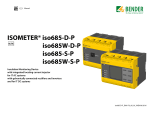 Bender ISOMETER iso685W-S-P User manual
Bender ISOMETER iso685W-S-P User manual
-
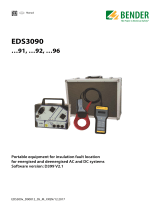 Bender EDS309x Owner's manual
Bender EDS309x Owner's manual
-
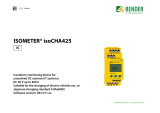 Bender ISOMETER isoCHA425 User manual
Bender ISOMETER isoCHA425 User manual
-
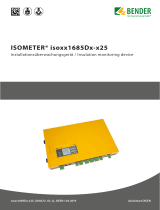 Bender iso1685DP-425/isoHV1685D-425/isoLR1685DP-325 Quick start guide
Bender iso1685DP-425/isoHV1685D-425/isoLR1685DP-325 Quick start guide
-
 Bender CMGF420 Owner's manual
Bender CMGF420 Owner's manual
-
Bender ISOMETER isoNAV685-D Quick start guide
-
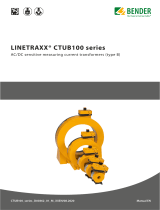 Bender CTUB100 series Owner's manual
Bender CTUB100 series Owner's manual
-
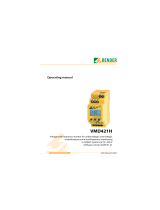 Bender VMD421H Operating instructions
Bender VMD421H Operating instructions
-
 Bender CC612 Owner's manual
Bender CC612 Owner's manual
Other documents
-
LG SV015iC5-1F User manual
-
Ablerex ENERBATT 3G Operating instructions
-
Ablerex BMS User manual
-
Gossen MetraWatt METRALINE RCD-CHECK Operating instructions
-
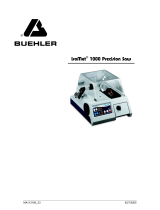 Buehler IsoMet 1000 User manual
Buehler IsoMet 1000 User manual
-
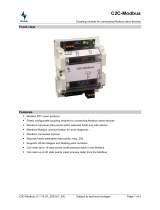 WURM C2C-Modbus Product information
WURM C2C-Modbus Product information
-
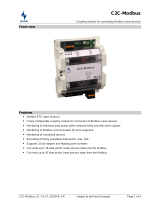 WURM C2C-Modbus Product information
WURM C2C-Modbus Product information
-
ICP A-821PGH User manual
-
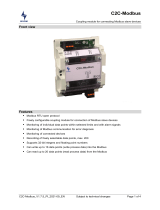 WURM C2C-Modbus Product information
WURM C2C-Modbus Product information
-
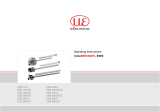 MICRO-EPSILON induSENSOR Serie EDS Owner's manual
MICRO-EPSILON induSENSOR Serie EDS Owner's manual



































































